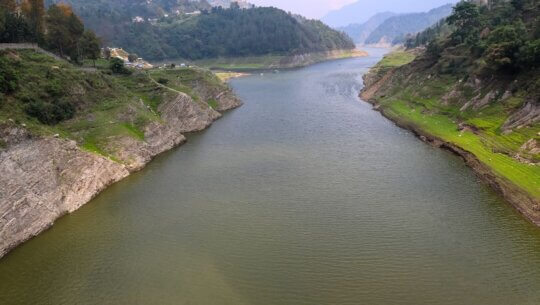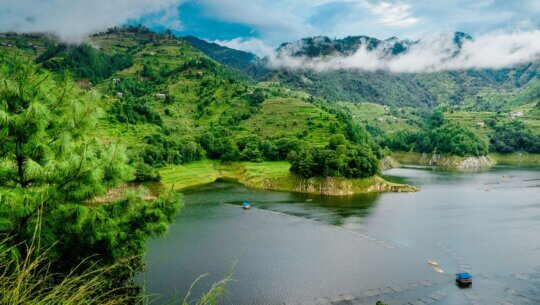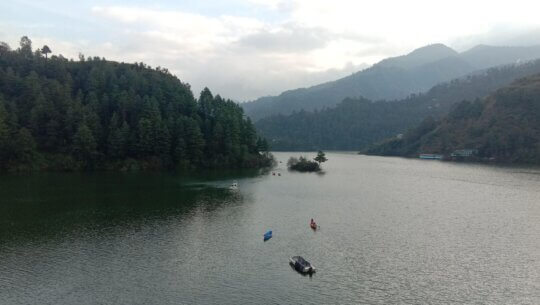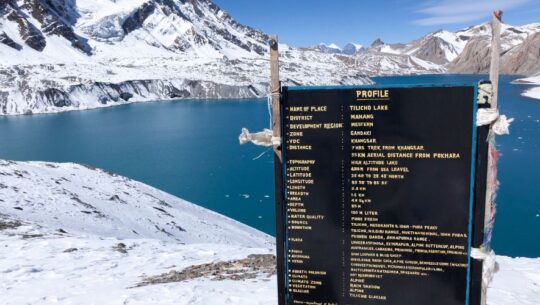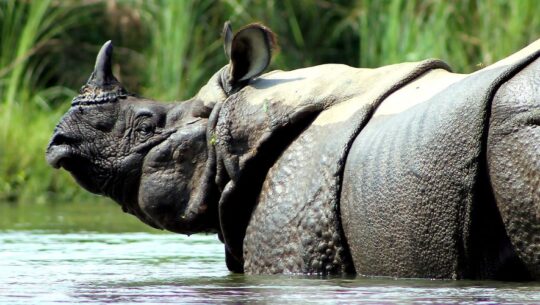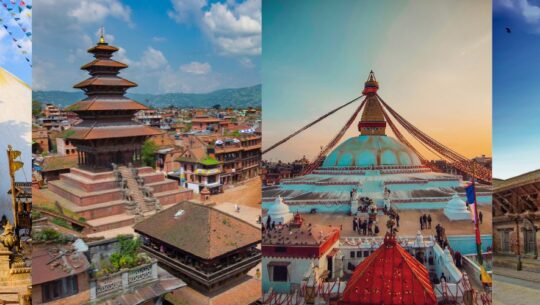Kulekhani Markhu Tour | One Day Tour Package 2025/26
TripAdvisor Reviews Recommended by 99.99% travelers
USD 250
Nepal
1 Days
Easy
1,600 meters (5,250 ft)/ 1 Mile at Kulekhani Markhu
N/A
private vehicle
1-20
Feb, Mar, Apri, May, June, Sep, Oct, Nov & Dec.
Highlights of Kulekhani Markhu Tour | One Day Tour Package 2025/26
- Kulekhani Markhu Tour offers an exciting one-day adventure that combines nature, culture, and history, all just a few hours from Kathmandu.
- The Kulekhani Dam, an engineering marvel, is Nepal’s first reservoir-based hydroelectric project, generating 106 MW of electricity.
- Indra Sarovar, Nepal’s largest artificial lake, provides an amazing opportunity for boating and enjoying breathtaking lake views.
- The iconic Markhu Suspension Bridge spans 100 meters above the lake, offering panoramic views of the surrounding hills and water.
- Explore the rich cultural heritage of Markhu village, home to diverse ethnic groups like Newar, Tamang, and Magar.
- Enjoy a serene boat ride across Indra Sarovar, with options for motorboats or paddleboats, providing unique perspectives of the lake.
- Indulge in local cuisine, featuring fresh fish from the lake and traditional dishes prepared by local families.
- Visit the Chitlang Goat Cheese Factory, where you can taste artisanal goat cheese and learn about sustainable farming practices.
- Hike to a hilltop viewpoint for stunning views of the entire lake and the Kulekhani Dam from an elevated perspective.
- Experience the local festivals and cultural events, such as Sonam Lhosar and Chitlang Mahotsav, which showcase the region’s traditions.
Kulekhani Markhu Tour | One Day Tour Package 2025/26 Brief Insight
Can you believe that within the span of 1 day, you can visit Kulekhani dam, take a walk on a Markhu suspension bridge, go boating in Indra Sarovar, and end the trip with a cultural village tour?
We know it’s a tough pill to swallow, but all of this is possible in our Kulekhani Markhu 1-day package.
Just 40 km (25 miles) southwest of Kathmandu lies a naturally gifted village in Makwanpur named Kulekhani Markhu. Locally, this place is also known as Markhu.
Sitting at 1600 m above sea level, from this village we can get a clear view of Nepal’s largest artificial lake, Kulekhani Reservoir, also known as Indra Sarovar.
This is the same lake where we will enjoy a boating experience during the tour. Its name itself carries a history as it came from Nepal’s Late queen Indra Rajya Laxmi Devi (also the mother of late King Birendra).
Furthermore, this 1.3 square km lake also acts as the crucial hydroelectric reservoir for the Kulekhani Dam.
This 114-meter-tall Dam, built in 1977, generates 106 MW of electricity through three power stations. This makes it Nepal’s first reservoir-based hydroelectric project. The dam stores 85.3 million cubic meters of water in a reservoir that stretches 7 kilometers long and 300 meters wide.
But the thing that truly makes Markhu better than other lakeside destinations is its proximity to Kathmandu.
While Pokhara requires 6-7 hours of travel from the capital, Markhu takes only 2-4 hours by road. The drive passes through scenic hills and traditional villages, making the journey itself enjoyable.
Besides being naturally gifted and an engineering marvel, Markhu is also culturally rich with four main ethnic groups: Newars (traditional traders and craftsmen), Tamang (Buddhist mountain people), Magar (warrior community from mid-hills), and Bahun (Brahmin hill people).
And when each community’s distinct festivals, food traditions, and architectural styles are combined, the Markhu village finds its true life.
Why Eco Nepal Trekkers for Kulekhani Markhu One Day Tour?
We provide professional boating services with both motorboats and paddle boats for 30-minute lake tours. Furthermore, we make sure that the boats are regularly maintained and operated by licensed pilots who know every corner of the Indra Sarovar.
Besides that, if you are into fishing, we can also supply fishing equipment and guide you to the best fishing spots where you can catch multiple freshwater fish varieties.
Our local team has all the knowledge about local wonders like the Chitlang Goat Cheese Factory – Nepal’s first artisanal goat cheese facility established in 2002.
If you wish, we can arrange factory tours as well, with fresh cheese tastings, and learn about sustainable dairy farming from the actual cheese makers.
Furthermore, we can also arrange visits to Bheda Farm (sheep breeding center), which has become famous as a filming location for Nepali music videos.
Additionally, we offer three different route options based on your preferences: the scenic 2-3 hour drive via the Dakshinkali-Hetauda highway, the adventure route that combines the Chandragiri cable car with hiking, or the challenging 19-20 km trek from Naubise.
Outline Itinerary
- Detailed Day Itinerary
Detailed Itinerary
Detailed Day Itinerary
Trek Distance :
44.3 km
Highest Altitude :
1,600 meters (5,250 ft)/ 1 Mile at Kulekhani Markhu
Trek Duration :
5-6 hrs
Meals :
N/A
Early Morning Departure (8:00 AM)
Your adventure begins with pickup from Thamel or your hotel location in central Kathmandu. We take the Ring Road route through Kalimati and Kalanki areas to avoid heavy city traffic, then exit at Nayamati junction toward Thankot. The morning drive covers 8-10 km from the city center, though morning rush hour may extend travel time by 15-30 minutes.
Arrival at Kulekhani Dam (9:45 AM)
After a scenic 1 hour 45 minute drive through terraced hillsides and traditional villages, we reach Nepal’s engineering marvel – the Kulekhani Dam. You’ll pass through an army security checkpoint where ID verification is required. The massive 114-meter-tall rock-fill dam structure stands impressively against the hill backdrop, representing Nepal’s first reservoir-based hydroelectric project that began operations in 1982. The three power stations generate 106 MW of electricity, making this a crucial component of Nepal’s power grid.
Suspension Bridge Adventure (10:30 AM)
A short 15-minute drive along the scenic lakeside road brings us to Markhu village, where the highlight awaits – walking across the iconic suspension bridge that spans over 100 meters above Indra Sarovar. This pedestrian bridge offers breathtaking 360-degree views of Nepal’s largest artificial lake, stretching 7 kilometers in length. From this elevated perspective, you can observe local fishermen casting their nets, traditional village life unfolding below, and the serene waters reflecting the surrounding hills. A similar experience can be found during the Langtang Valley Trek and the Everest Base Camp trek.
Lake Boating Experience (11:15 AM)
At the boat jetty near Markhu village, you’ll embark on a peaceful boating journey across the 1.3 square kilometer artificial lake. Whether you choose a motorboat for a quick 15-20 minute tour or prefer the leisurely pace of a paddle boat for 30-45 minutes, you’ll navigate calm waters while observing various fish species and water birds. The water-level perspective reveals the lake’s impressive scale and the surrounding hills’ natural beauty.
Lakeside Lunch with Local Flavors (12:00 PM)
Your midday meal takes place at a local restaurant with direct lake views, featuring fresh fish caught directly from Indra Sarovar. The traditional preparation methods include fish curry or fried fish served with dal bhat, while vegetarian options showcase organic vegetables from the nearby Chitlang area. The outdoor seating arrangement allows you to continue enjoying the lake scenery while experiencing home-style cooking by local families.
Cultural Village Exploration (1:00 PM)
The afternoon brings authentic cultural immersion as you walk through Markhu village, meeting local families from the Tamang, Newari, and Magar communities. You’ll observe traditional stone and mud-brick architecture, witness local crafts including metalwork and pottery, and learn about terraced farming practices and livestock rearing. This exploration reveals the area’s history as an ancient trade route and provides insights into how these communities have adapted to modern changes while preserving their traditions.
Optional Hilltop Viewpoint Hike (1:45 PM)
For those seeking a bit more adventure, a moderate 45-minute hike starts from the village edge near the school area. The trail gains 100-150 meters in elevation over 20 minutes, leading to a panoramic viewpoint that showcases the complete 7-kilometer expanse of Indra Sarovar, the Kulekhani Dam structure from an elevated angle, and village life from a bird’s-eye perspective.
Return Journey (2:30 PM)
The return trip to Kathmandu follows the route through Chitlang, Godam, and Thankot, covering 31-35 km total distance. We time the departure to avoid afternoon rush hour traffic, with a rest stop at Thankot checkpoint, where you can enjoy the final mountain views before entering the Kathmandu Valley. You’ll arrive back in Thamel or your original departure point by 5:00 PM, completing a comprehensive 9-hour experience that combines Nepal’s largest artificial lake exploration, traditional village culture, engineering marvels, and authentic local cuisine.
Cost Includes
- Guide Salary and Food
- Experienced and Licensed holder Guide
- All ticket permits for boating
- Mineral water during the tour
- All transportation during the tour
Cost Excludes
- All meals and drinks
- tips for your guide and porter
Key Attractions Of Kulekhani Markhu Tour
Indra Sarovar Lake – Nepal’s Largest Artificial Lake
This 7-kilometer-long reservoir serves as the centerpiece attraction, created by the 114-meter-tall Kulekhani Dam, which was built in 1982. This lake reflects the surrounding hills while offering motorboat tours, paddleboat excursions, and freshwater fishing for trout and carp species.
Swimming becomes possible during warmer months from April to October when water temperatures rise sufficiently. The lake’s calm surface creates ideal conditions for kayaking and canoeing, while over 160 bird species inhabit the surrounding forests, making wildlife observation exceptional.
Markhu Suspension Bridge and Adventure Activities
The iconic pedestrian bridge spans over 100 meters above Indra Sarovar, providing 360-degree panoramic views impossible to find elsewhere near Kathmandu.
Local fishermen can be observed casting nets while traditional village life unfolds below the elevated walkway. Furthermore, the newly opened Kulekhani Zipline at Dobato offers three-stage aerial adventures directly over the lake surface.
Additionally, if you are into hiking, the Chitlang to Markhu hiking trail covers 2.5 hours through terraced fields, rhododendron forests, and Bheda Farm (Nepal’s first sheep breeding center established decades ago).
Culture and history
Would you believe that this region’s recorded history dates back to 273-232 BC?
The first known record of this beautiful region comes from Emperor Ashoka. The famous indian emperor established one of the Ashoka Stupas in nearby Majhgaon village. This stupa laid the foundation for this region’s Buddhist foundation.
Other known history comes from Lichhavi period inscriptions that date back to the 5th-8th centuries. These inscriptions at Toukhel tell us the stories of King Amshubarma and King Udayadev’s rule over ancient Chitlang.
Besides that, this area served as the primary Tibet-India trade route before modern highways existed, which brought economic prosperity through centuries of merchant activity.
Talking about the locals, you will find multiple Newari sub-communities, Gamal (former royal kitchen servants), and Gopali (descendants of pre-300 AD Gopal rulers) in this region.
Despite the modernizations, the locals still maintain their distinct dialects and traditions.
For example, the Tamang populations in this region still celebrate the Sonam Lhosar New Year festival by practicing traditional Damphu drum music.
Besides that, other annual festivals include Maghe Sankranti community gatherings, Chitlang Mahotsav cultural programs, and the 12-year cyclical dance performances connecting to ancient Patan heritage.
Weather, Best Time to Visit, and Packing Guide
Talking about Climate and Seasonal Weather Patterns, Kulekhani Markhu experiences a temperate mountain climate at 1,600 meters with four distinct seasons affecting tour planning and activity options.
The spring season from March to May delivers daytime temperatures of 18-24°C and nighttime lows of 6-12°C, featuring clear skies perfect for photography.
Monsoon season from June to August brings daytime highs of 20-26°C and nighttime temperatures of 12-16°C. However, the whole area during this time is affected by frequent heavy afternoon rainfall and high humidity levels reaching 80-90%. In fact, during this season, you will find occasional landslides that temporarily block rural access roads as well.
Autumn, from September to November, offers ideal touring conditions with daytime temperatures of 17-23°C and nighttime lows of 5-10°C.
You can see crystal-clear forests and stable weather patterns perfect for boating and hiking activities.
On the other hand, winter months from December to February feature daytime highs of 12-18°C and nighttime temperatures dropping to 0-4°C. During this season, you can experience crisp atmospheric conditions with possible morning frost and rare snowfall visible on surrounding mountain peaks.
Essential Packing Checklist Clothing Requirements:
- Lightweight moisture-wicking base layers for temperature regulation
- Insulating mid-layer fleece or lightweight down jacket for cool evenings
- Wind and water-resistant outer shell jacket and pants for weather protection
- Long-sleeve shirts and convertible hiking pants for sun and insect protection
- Quick-dry underwear and socks for comfort and hygiene
Footwear and Accessories:
- Sturdy hiking shoes or trail runners with good grip for varied terrain
- Sandals or slip-ons for boating activities and lakeside relaxation
- Gaiters for monsoon season mud and leech protection on forest trails
- Wide-brimmed hat and UV protection sunglasses for sun exposure
- Lightweight gloves and a warm hat for early mornings or winter visits
Essential Equipment:
- Daypack 20-25L capacity with integrated rain cover
- Reusable water bottle or hydration bladder 1-1.5L capacity
- Sunscreen SPF 30+ and lip balm for high-altitude UV protection
- Insect repellent for the monsoon season mosquito and leech protection
- Headlamp or flashlight with extra batteries for early starts
- Camera equipment with spare batteries and memory cards
- Portable power bank with 10,000 mAh capacity for device charging
- Basic first-aid kit including blister treatment and antiseptic supplies
Day-night temperature variations up to 15°C require layered clothing systems, while seasonal weather patterns determine specific gear needs from waterproof equipment during monsoon months to warm clothing for winter morning departures at 8:00 AM.
Safety, Health, and Emergency Information
To keep our travellers safe, we follow rigorous safety measures, which include registered vehicles that undergo routine mechanical inspections and experienced drivers trained specifically for mountain road conditions and defensive driving techniques.
Furthermore, all boating activities on Indra Sarovar are accompanied by life jacket usage, with boat operators carrying communication devices.
The suspension bridge operates under posted weight capacity limits with trained guides ensuring proper crowd control.
On the other hand, the restricted dam areas feature clear barrier markings that visitors must strictly observe for personal safety.
Certified local guides lead optional hilltop hikes carrying comprehensive first-aid kits and possess detailed knowledge of evacuation routes, with group sizes limited to a maximum of 12 participants for effective supervision on narrow forest trails.
Health Precautions and Medical Preparation
Tourists should ensure routine vaccinations, including tetanus and diphtheria, remain current, while considering hepatitis A and typhoid vaccines when planning to consume local foods during the lakeside dining experience.
Daily water consumption of at least 2 liters becomes essential at an elevation of 1,600 meters to prevent dehydration.
Although the mere 1,600 m rarely causes serious issues, we advise that elevation-sensitive individuals monitor for mild symptoms, including headaches or nausea, and ascend gradually during hiking activities.
Emergency Response and Medical Support Systems
All our guides and drivers carry comprehensive first-aid kits containing bleeding control supplies and basic medications.
Furthermore, they receive training in CPR and basic trauma response procedures for immediate emergency care.
Additionally, the nurse-staffed Markhu Health Post can provide great treatment for minor wounds and basic medical issues.
In cases of severe injuries, there is availability of ambulance or private vehicle transport to Makwanpur District Hospital, located 30 kilometers away, or direct evacuation to Kathmandu hospitals for critical cases.
From our side, our guides follow communication protocols that include maintaining mobile connectivity throughout village areas and two-way radios for dam and lake sections.
We also provide you with emergency contact information to local police, health posts, and tour operator headquarters numbers.
Travel Insurance Requirements and Coverage
Comprehensive travel insurance is strongly recommended that covers medical evacuation from remote areas, hospitalization, surgery, and repatriation costs for serious medical emergencies.
Adventure activity coverage must include injuries sustained during boating, hiking, and zipline activities.
Popular Add-ons:
- Lunch with the serving of local fish.
- Overnight stay at Markhu Village.
- Chitlang Tour
- Fishing at Markhu with equipment
- Hiking in Markhu Village
Dates of Trip
$250Save $50
October 2, 2025 -
$250Save $50
October 15, 2025 -
$250Save $50
November 5, 2025 -
$250Save $50
November 12, 2025 -
$250Save $50
December 4, 2025 -


